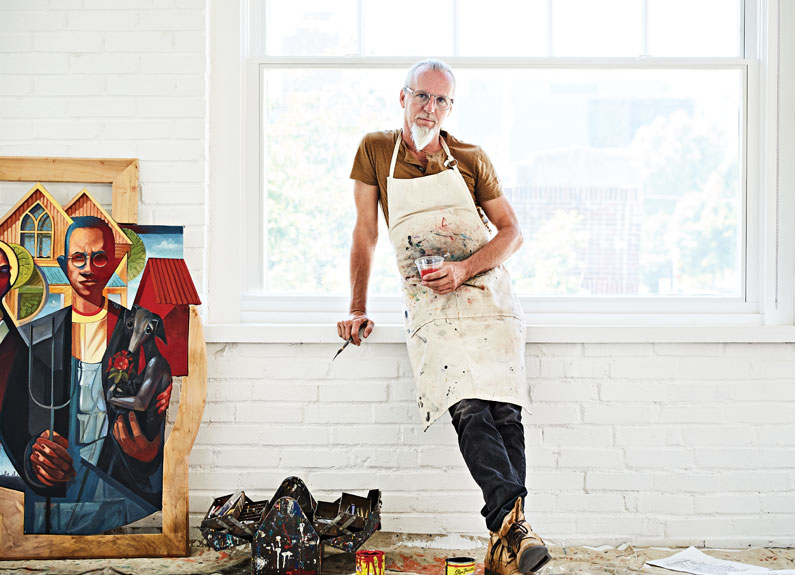
What I Do: Phil Jarvis
If you dine out in St. Louis, you’re probably a fan of Phil Jarvis’ work – you just don’t know it yet. Jarvis is a local artist, muralist and sign painter, carefully identifying hundreds of restaurants, bars and tattoo shops in the U.S. and dozens more around the world. In the industry 40 years, his elegant hand-painted lettering and mural work grace establishments from Sugarfire Smoke House and Sauce on the Side to Sump Coffee and Reeds American Table, each signed with his name and a bearded profile. Here, Jarvis shared why some signs stand the test of time.
First impressions
“A hand-painted sign better represents who they are as a shop or restaurant because they are one unique place. … The sign is really the first impression people get when they walk into a place. … (Owners) are very conscientious about every part of the product. I think a sign done by hand represents that same sort of mentality.”
More than graphic design
“I’m not really fond of just doing straight-up Helvetica or regular block font. Mainly because a computer can do that. What’s the point? I try to embellish it with shadows and highlights, make it look more 3-D, put some flourishments around it.”
Better with age
“Vinyl doesn’t get more character as it gets older; it looks old and worn out. But you can look at (a hand-painted sign) and almost tell how old it is and see the brush strokes as it gets older.”
Clarity and art
“I learned pretty quickly that a sign is not meant to be ambiguous. If the sign says ‘Turn right,’ and there’s an arrow, you don’t want them to contemplate what the meaning of ‘right’ is. … On the other hand, when I come home and paint, the opposite is true. … (My art is) supposed to be something that they contemplate.”
Sign painting renaissance
“It’s definitely taken a surge upward. There’s lots of kids in their 20s wanting to learn how to paint signs. … There are not a lot of avenues for artists these days to do things by hand. Everything is done on a computer: graphic design, all the illustrations, even signs. The only two industries left really are tattoos and sign painting.”
Worldwide clientele
“I can’t call myself worldwide until I’ve got four continents, and I’ve only got three so far. Australia or southern Africa, either one of those would be fine. I’m not so fond of Antarctica … but if I were invited, I’d go down and paint one sign.”
Tags : Places





